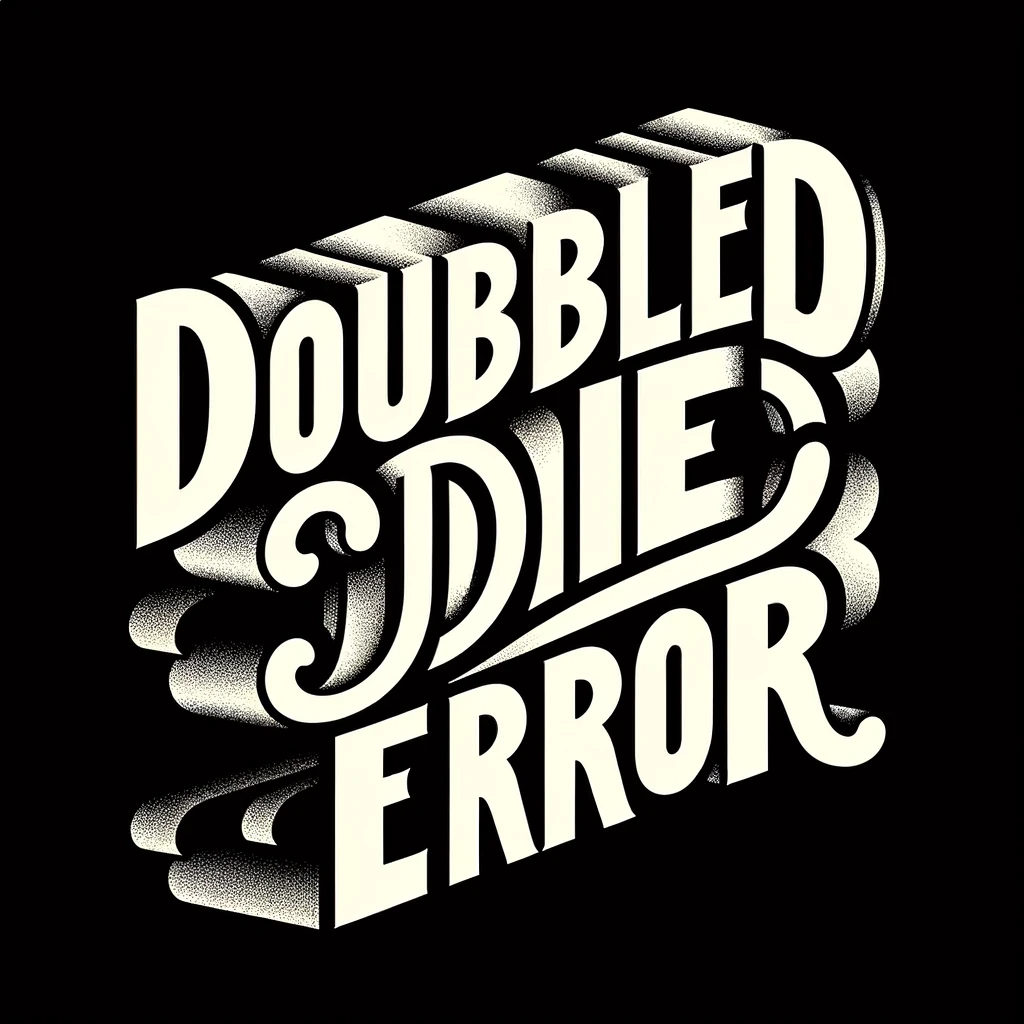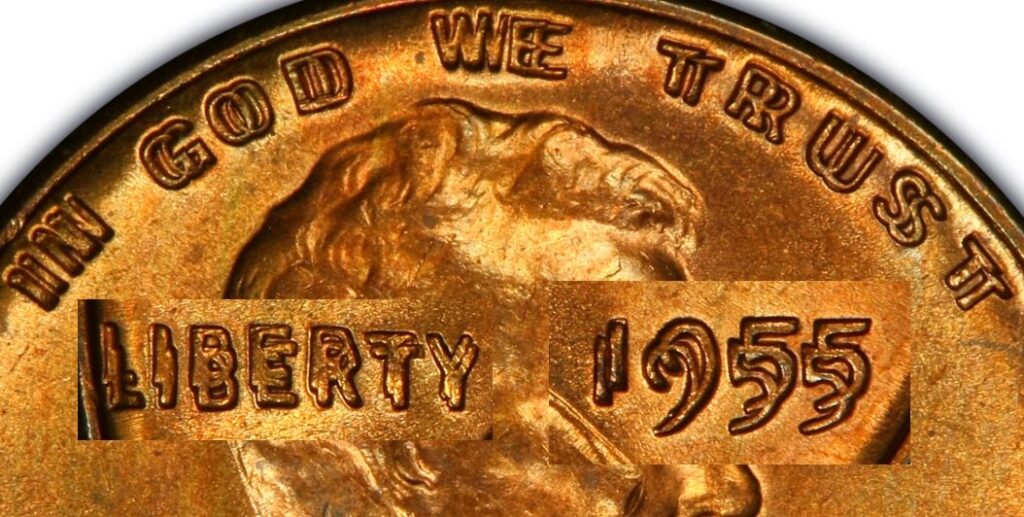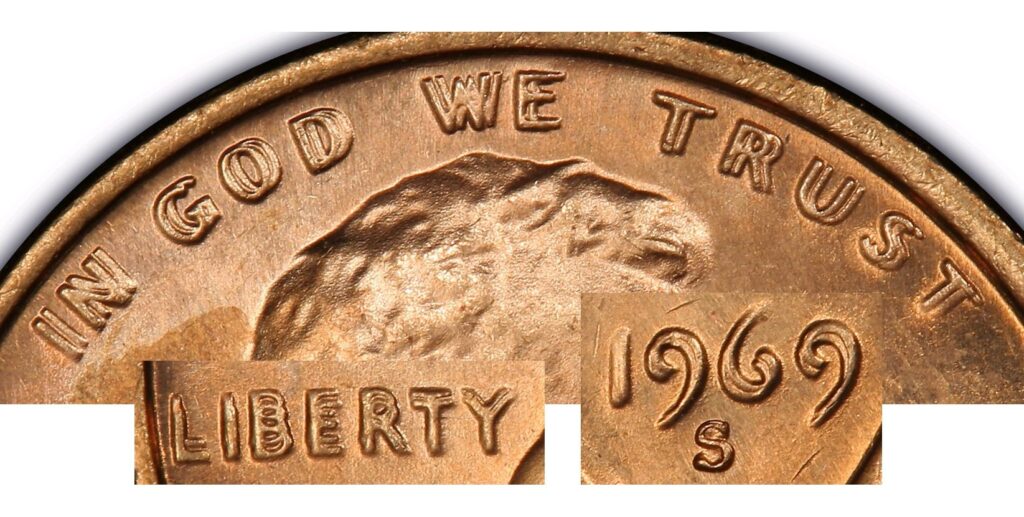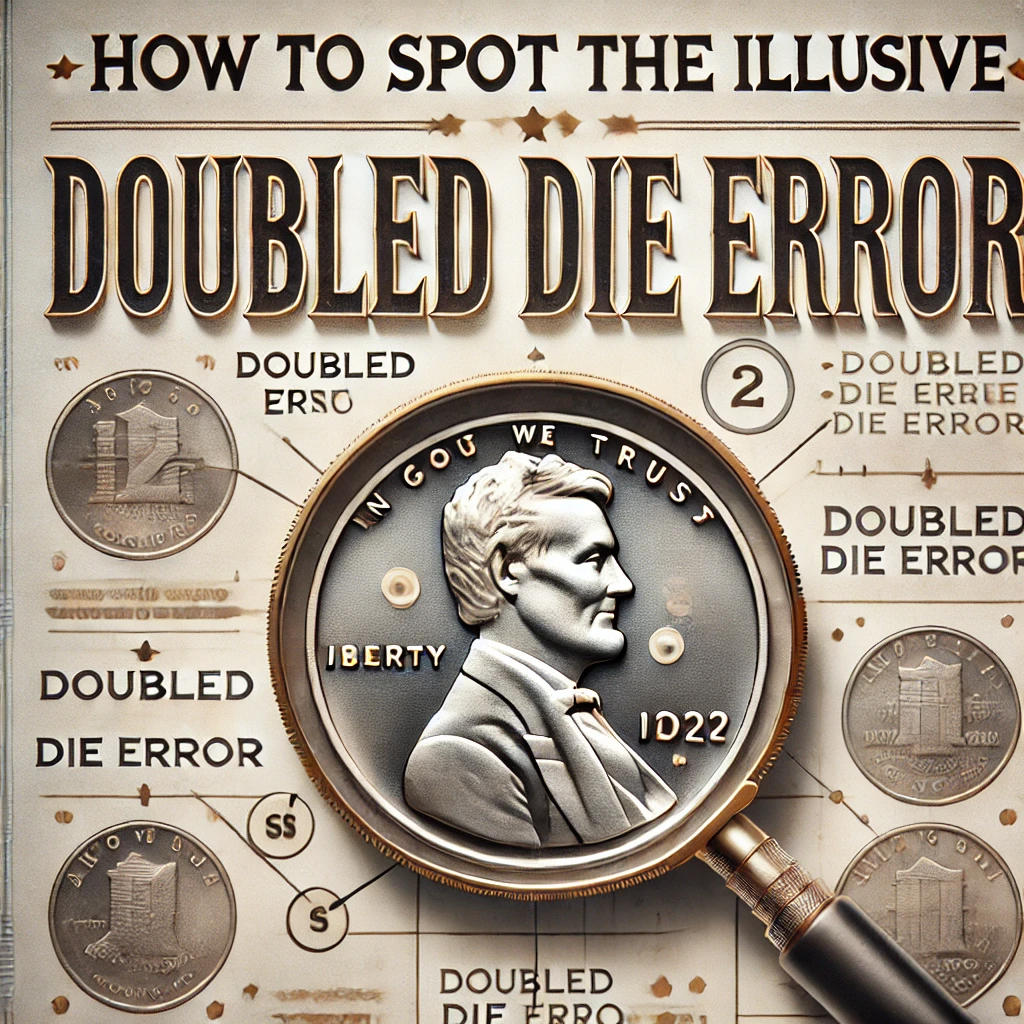Collecting coins is more than just a hobby for many—it’s a thrilling treasure hunt where the prize can be worth thousands, even hundreds of thousands, of dollars. Among the most coveted treasures in the numismatic world are doubled die error coins. These coins are not only fascinating but can also be incredibly valuable. However, spotting a doubled die error can be tricky, especially for those new to coin collecting. This guide will take you through everything you need to know to identify these elusive errors.
What is a Doubled Die Error?
Before diving into how to spot a doubled die error, it’s essential to understand what it is. A doubled die error occurs during the coin minting process when the coin’s die—the tool used to strike the design onto the blank coin—receives two impressions that are slightly misaligned. This misalignment results in the doubling of the design elements on the coin. Importantly, this doubling occurs on the die itself before it strikes the coin, making each coin struck by that die exhibit the same doubling.
The key point here is that this doubling is part of the coin’s design, not post-mint damage or wear. The doubled images on these coins can range from subtle to dramatic, with some being easily noticeable to the naked eye, while others may require magnification.
Types of Doubling
There are several different types of doubling, and it’s crucial to distinguish between true doubled die errors and other forms of doubling that may not hold significant value.
- Class I: Rotated Hub Doubling
This occurs when the die receives a second impression that is rotated in relation to the first. The result is a doubling effect that usually appears along the periphery of the design. - Class II: Distorted Hub Doubling
This happens when the die receives a second impression that is slightly off in relation to the first, often due to temperature changes or pressure variations during the minting process. This can cause the doubling to appear in specific areas, such as lettering or numbers. - Class III: Design Hub Doubling
Occurs when there are two different designs on the hub, which is transferred onto the die. The doubling can result in very distinct differences between the two images, making this one of the most noticeable forms. - Class IV: Offset Hub Doubling
This type of doubling occurs when the hub shifts sideways between the impressions. The result is a doubling that is parallel and noticeable across the entire design. - Class V: Pivoted Hub Doubling
In this case, the die rotates around a point (pivot) near the center during the second impression, causing the doubling to fan out from the pivot point. - Class VI: Distended Hub Doubling
Occurs when the hub stretches or compresses between impressions, often due to mechanical issues. This type of doubling tends to be less dramatic and more localized. - Class VII: Modified Hub Doubling
This type involves slight modifications to the design between hubbing impressions, leading to a mix of old and new design features on the same coin. - Class VIII: Tilted Hub Doubling
Occurs when the hub tilts during one of the impressions, resulting in a doubling that is skewed or tilted from the original design.

How to Identify a Doubled Die Error
Spotting a doubled die error can be challenging, especially for beginners. However, with some practice and the right tools, you can start identifying these errors with confidence.
- Examine the Letters and Numbers
The most common places to find doubling are in the letters and numbers on the coin. Look closely at the text on the coin, particularly in areas like “LIBERTY,” “IN GOD WE TRUST,” or the date. Doubling often appears as a distinct shadow or as overlapping images of the same letter or number. - Use a Magnifying Glass or Loupe
A magnifying glass or jeweler’s loupe with at least 10x magnification is essential for spotting finer details that are not visible to the naked eye. This tool will help you see subtle doubling that could indicate a valuable error. - Check for Consistent Doubling
A true doubled die error will have consistent doubling across the entire design. If you notice doubling in one part of the coin but not another, it could be machine doubling, which is far less valuable. Machine doubling often appears as a flat, shelf-like doubling rather than the more pronounced and rounded images seen with true doubled die errors. - Compare with Known Examples
One of the best ways to confirm a doubled die error is to compare your coin with known examples of doubled die errors. Online resources, coin guides, and error coin catalogs often include images of famous doubled die errors, which can be invaluable for comparison. - Look for Doubling on Both Sides of the Coin
While most doubled die errors are found on one side of the coin, it’s possible for errors to occur on both the obverse (front) and reverse (back) sides. Be sure to check both sides carefully. - Consult an Expert
If you think you’ve found a doubled die error but aren’t entirely sure, consult with a professional numismatist or submit the coin to a grading service like PCGS or NGC. These experts can authenticate the coin and provide an official grade, which can significantly increase its value if it is indeed a doubled die.
Famous Doubled Die Error Coins

Several doubled die error coins have become famous and highly sought after by collectors. Here are a few examples:
- 1955 Lincoln Cent: One of the most famous doubled die errors, with noticeable doubling on the date and the words “LIBERTY” and “IN GOD WE TRUST.” This coin can fetch thousands of dollars, even in circulated condition.
- 1972 Lincoln Cent: Another well-known doubled die, with significant doubling visible in the date and the text on the obverse.
- 1969-S Lincoln Cent: A rare and valuable doubled die error with dramatic doubling on the obverse, particularly in the date and inscriptions. Some examples of this coin have sold for over $100,000.
- 1995 Lincoln Cent: This more modern doubled die error features clear doubling on the obverse and is one of the more accessible error coins for new collectors.

Conclusion: Patience and Practice Pay Off
Identifying doubled die error coins can be both exciting and rewarding. While it may take time to develop the skills needed to spot these elusive errors, the potential payoff is well worth the effort. Whether you’re a seasoned collector or just starting, the thrill of discovering a rare doubled-die error coin is a feeling like no other.
Remember, patience and practice are key. Regularly examine your pocket change, keep learning about different types of errors, and don’t hesitate to seek advice from more experienced collectors. With time, you’ll sharpen your skills and might just find a coin worth a small fortune hidden in your pocket change.
Ready to delve deeper into the world of valuable error coins? Join our community of coin enthusiasts at Rich Off Error Coins by subscribing to our Blog. Stay updated on the latest discoveries, tips, and insights that can turn your coin collection into a treasure trove!
